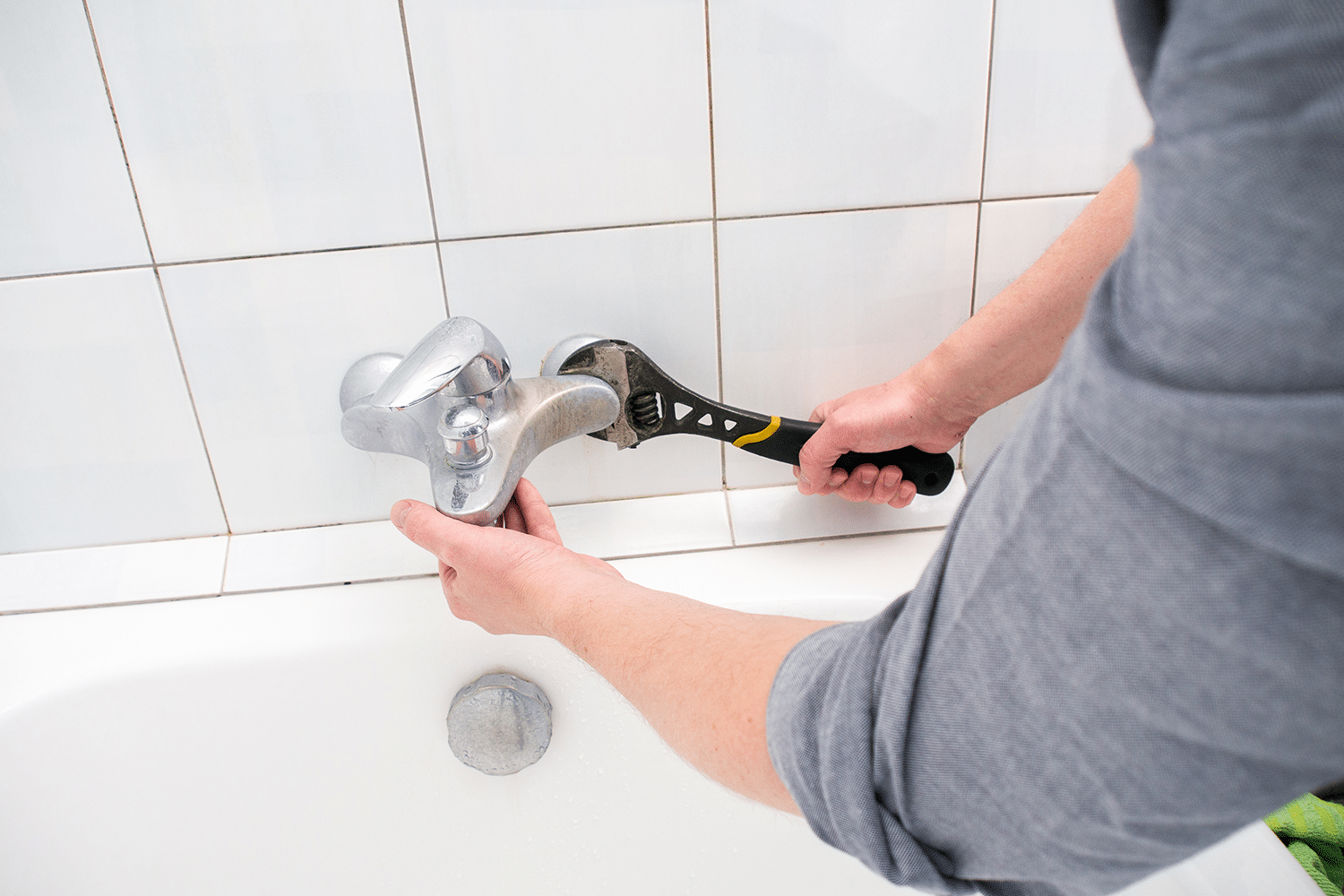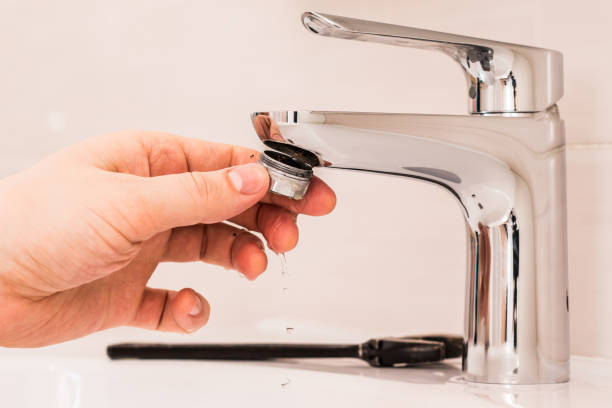Which It's Crucial to Rectify a Dripping Faucet
Which It's Crucial to Rectify a Dripping Faucet
Blog Article
The article directly below about Leaky Faucets: Why They Happen & What to Do About Them is totally informative. Give it a go and draw your own final thoughts.

Trickling taps might appear like a small inconvenience, but their influence goes beyond just the aggravation of the noise. From drainage to incurring unneeded monetary costs and wellness dangers, neglecting a dripping tap can bring about different consequences. In this write-up, we'll explore why it's important to resolve this common home concern immediately and successfully.
Wastefulness of Water
Ecological Impact
Leaking faucets add considerably to water wastage. According to the Environmental Protection Agency (EPA), a solitary tap dripping at one drip per secondly can squander more than 3,000 gallons of water per year. This not only strains water resources but additionally affects ecosystems and wildlife depending on them.
Financial Expenses
Increased Water Expenses
Beyond the ecological impact, leaking faucets can pump up water bills considerably. The built up wastage with time converts into greater utility costs, which might have been prevented with prompt repair work.
Possible Building Damage
Additionally, long term dripping can cause damage to fixtures and surfaces surrounding the faucet. Water accumulation can cause staining, rust, and also architectural issues if left neglected, causing extra repair service expenses.
Wellness Worries
Mold and Mildew Growth
The consistent visibility of dampness from a trickling faucet develops a suitable environment for mold and mildew development. These fungis not only endanger indoor air quality yet additionally position wellness risks, particularly for individuals with breathing problems or allergic reactions.
Waterborne Conditions
Stagnant water in leaking taps can become a breeding place for germs and other microorganisms, raising the threat of waterborne diseases. Contaminants such as Legionella bacteria grow in stationary water, possibly bring about serious ailments when ingested or inhaled.
Do it yourself vs. Professional Repair
Advantages and disadvantages of Do It Yourself Repair
While some might try to deal with a leaking tap themselves, do it yourself repair services come with their own set of difficulties. Without proper expertise and devices, DIY efforts can worsen the concern or bring about insufficient repairs, extending the issue.
Advantages of Working With a Professional Plumber
Employing a specialist plumber ensures that the underlying reason for the leaking tap is addressed successfully. Plumbings possess the experience and equipment to diagnose and repair faucet problems effectively, conserving time and decreasing the danger of additional damages.
Step-by-Step Guide to Repairing a Dripping Faucet
Tools Needed
Before attempting to take care of a leaking tap, gather the needed devices, consisting of a flexible wrench, screwdrivers, replacement parts (such as washers or cartridges), and plumber's tape.
Common Tap Issues and Their Solutions
Identify the type of faucet and the specific concern causing the drip. Common issues include worn-out washers, corroded valve seats, or damaged O-rings. Describe supplier guidelines or on-line tutorials for detailed advice on repairs.
Preventive Measures
Regular Maintenance Tips
To prevent dripping taps, execute regular upkeep such as cleaning up aerators, checking for leakages, and replacing damaged components without delay. In addition, take into consideration setting up water-saving gadgets or upgrading to more reliable components.
Value of Prompt Repairs
Addressing trickling taps as soon as they're noticed protects against more water wastage and prospective damages, eventually conserving both water and cash in the long run.
Influence On Building Value
Perception of Well-Maintained Residential Property
Preserving a residential or commercial property in good condition, consisting of resolving maintenance concerns like leaking faucets, boosts its perceived worth and worth among possible purchasers or tenants.
Influence on Resale Value
Qualities with well-maintained plumbing fixtures, including faucets, command higher resale worths in the real estate market. Addressing dripping faucets can contribute to a favorable impact throughout residential property evaluations and settlements.
Ecological Duty
Private Payment to Conservation
Taking obligation for repairing dripping taps straightens with more comprehensive initiatives towards water preservation and environmental sustainability. Every person's actions jointly make a significant effect on preserving priceless resources.
Lasting Living Practices
By focusing on prompt repairs and embracing water-saving habits, individuals add to lasting living practices that benefit both present and future generations.
Verdict
Attending to a leaking tap exceeds mere benefit; it's a necessary action toward saving water, lowering economic costs, and guarding wellness and residential or commercial property. Whether with do it yourself repairs or professional aid, doing something about it to take care of dripping faucets is a small yet impactful means to promote liable stewardship of sources and contribute to a healthier, extra lasting future.
How to Fix a Dripping or Leaky Faucet
A leaking faucet is one of the most common problems that homeowners encounter, but it being commonplace doesn’t make it any less annoying. The constant drip drip drip of a leaking bathtub faucet, showerhead, or sink tap can disturb your home’s serenity. Left neglected, a dripping faucet can also result in higher water bills and discoloration or mold growth in your sink or plumbing fixtures.
Fortunately, you don’t have to be a trained plumber to know how to stop a dripping faucet. With some basic tools, replacement parts, and a little patience, leaky faucet repair is a breeze. In this article, we’ll explain what causes dripping faucets and how you can fix them.
What Causes a Leaking Faucet?
Kitchen and bathroom faucets come in all manner of designs, but most involve some combination of valves, O-rings, seals, and washers. The O-ring is usually the weakest link, but any one of these pieces can wear down over time. Heat, moisture, temperature fluctuations, minerals, mold, and movement can contribute to warping and corrosion, breaking the watertight seal. This just comes with the territory of being a homeowner. Everything is always subject to wear and tear, and some component parts of your appliances and fixtures need to be replaced on occasion. At least replacement O-rings are cheap!
More rarely, dripping faucets can be a symptom of excessively high water pressure. Were this the case in your home, you would probably notice that the leak is not isolated to one faucet. Water pressure issues are harder to resolve on your own. We recommend contacting a professional plumber if you suspect your water pressure is too high.
How to Fix a Dripping Faucet
Pipe wrench or monkey wrench Allen wrench set Screwdrivers Old towel or rag Shut off the water.
Before you do anything, you need to turn off the water to keep from drenching your kitchen or bathroom. You should find a valve under the sink and against the wall. Once you’ve turned this valve, try turning the faucet on to confirm that the water source has been cut off.
If you can’t locate your local valve for the faucet you’re working on, you can always shut off the water to the house at the main valve. Of course, this will prohibit anyone from using the sinks, showers, or toilets while you’re working on the faucet that’s giving you trouble.
Plug or block the drain.
You’ll be disassembling the faucet and removing some small bits of hardware. Plug the drain with a stopper or rag to avoid the possibility of a small screw falling into your P-trap.
Take apart the faucet assembly.
There are several varieties of kitchen and bathroom faucets, each with its own manner of assembly. For detailed instructions on how to disassemble your faucet, you can refer to the fixture’s manual or contact the manufacturer. If you know whether you have a ball, disc, cartridge, or compression faucet, you can find detailed schematics online.
In general, you need to begin by removing the faucet handles. You might notice a small screw that you’ll need to remove with a screwdriver or Allen wrench. If you don’t see any visible securing hardware, it’s likely hidden under a decorative cap that can be unscrewed or popped off with flathead screwdriver.
Remove each piece methodically, consulting a schematic when necessary. Take notes or arrange the pieces in such a way to make it easier to correctly reassemble the faucet later.
Remove the cartridge.
Once you’ve removed the handles and securing hardware, you should be able to remove the valve cartridge or stem. Some cartridges will slide right out. Other faucet models will require you to loosen a nut with a pipe wrench before you can remove the valve stem.
Examine the exposed hardware.
With the cartridge or stem removed, inspect the component parts. Check the rubber O-rings for wear and tear. Also examine the seat washer for corrosion or other damage. These pieces are usually the responsible parties for a dripping faucet, but it’s worth inspecting the other component parts while you have the faucet disassembled.
Find replacement parts.
Once you’ve identified which faucet component has failed, find an identical replacement. Your local hardware store should have O-rings, seat washers, and other standard components in stock. If you have a luxury or uncommon faucet, you may have to contact the manufacturer for a replacement part.
It’s a good idea to take your old parts with you to the hardware store so you can compare them with the store’s inventory and be sure you’re purchasing the correct replacement.
Reassemble the faucet.
With your new parts in hand, reconstruct the faucet and handles. Don’t be tempted to overtighten screws or nuts. You might think this could create a better seal, but it can instead damage or bend a delicate part of the assembly and create a new problem for you.
Turn on the water and test the faucet.
The only thing left to do is test your work. Unplug the sink, turn the water back on, and try the faucet. Congratulate yourself on a job well done!
https://www.libertyhomeguard.com/how-to-fix-a-dripping-or-leaky-faucet/

I am very involved in Why Is It Important To Fix Your Leaking Tap/Faucet? and I hope you enjoyed reading our blog posting. If you please take the time to share this blog post if you enjoyed reading it. I cherish your readership.
Report this page